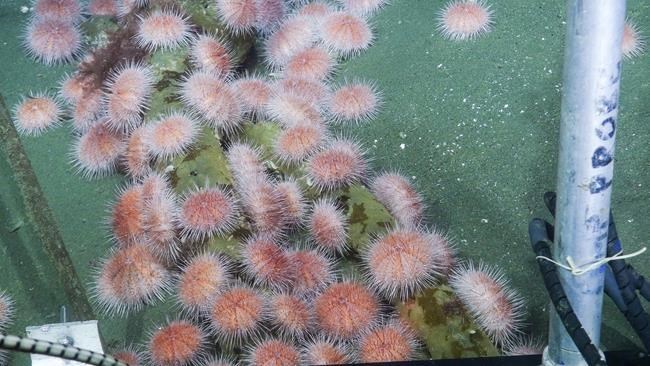VANCOUVER — Pink sea urchins off the coast of Vancouver Island are expanding into shallower waters, in what researchers say is an indication of how rapidly climate change is affecting ocean life.
Researchers at Memorial University, Ocean Networks Canada and the University of Victoria found the urchins, living as deep as 400 metres below, were expanding their populations into shallower water at an average rate of 3.5 metres per year as ocean warming reduces oxygen levels and food sources at lower depths.
The study's co-author, Rylan Command, said heat domes and heat waves are becoming more common, and understanding how the ocean responds to those changes can have a direct impact on people.
The movement of the pink urchins over time could, for example, upset the balance with other sea creatures, leading them to replace other species, such as red sea urchin harvested in fisheries, he said.
"It's almost like an indicator that things are changing rapidly and that matters for people, because that's going to affect us too," he said.
Researchers looked at 14 years of data including before, during and after the marine heat wave known as "The Blob," which persisted in the Pacific Ocean between 2013 to 2016.Â
They used data from both an Ocean Networks Canada observatory and the Federal Fisheries and Oceans trawl survey to collect information from about 400 metres deep, covering an area of 760-square kilometres.
"We were able to get a holistic picture of how everything is changing. I think that kind of data combination is really important and really useful," Command said.
Study co-author Fabio De Leo, who's with Oceans Network Canada, said warming from The Blob destroyed much of the kelp the urchins eat, causing their populations to drop off dramatically.
"The kelp forests felt the marine heatwave pretty strongly. So, this essentially is one of the main food items for the pink urchin," he said.
The researchers say the warmer-than-normal surface temperatures also disrupted the ocean process known as "upwelling," when nutrient-rich water from lower depths cycles up to the surface, potentially affecting where the urchins find food.
The СŔ¶ĘÓƵ research is consistent with similar work done in California in 2017, which found that pink urchins in that region were also seeking shallower waters.
De Leo said having data stretching over more than a decade is important for monitoring the area.
"We need to know how biodiversity and how marine communities are changing over time to adapt and to make plans," he said.
This report by The Canadian Press was first published Feb. 7, 2023.
Ashley Joannou, The Canadian Press
Note to readers: This is a corrected story. A previous version said the research matched California studies. In fact, the research is consistent with other studies from California.




